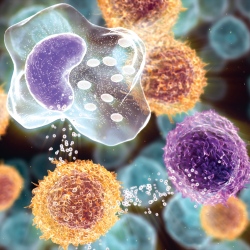
Researchers at UC San Diego have created a new weapon in the fight against Alzheimer’s: living neurons in the lab. Lead by Laurence Goldstein, director of UCSD’s Stem Cell Program, the team of scientists took fibroblasts from skin tissue to create induced pluripotent stem cells (iPSCs), which can become any mature cell in the body, including nerve cells. By harvesting fibroblasts from patients with Alzheimer’s, Goldstein and his colleagues were able to produce neurons that displayed clear tendencies towards developing the disease. Typical research requires harvesting brain tissue from dead patients, but these living cells provide a unique opportunity to study Alzheimer’s while it is still being developed. If this technique becomes widely adopted it will give researchers all over the world the samples they need to better understand, and possibly defeat, Alzheimer’s.
To effectively fight an enemy, one needs to know how they live. Researchers have been trying to conquer Alzheimer’s for decades, and in that pursuit have found many different ways to study the disease. Yet examining actual cells that have Alzheimer’s is difficult. Doctors simply won’t cut into a patient’s brain and remove tissue they think is affected. At least, not while that patient is alive. Yet postmortem study examines cells long after the disease has taken its course. What researchers need is a reliable way to study how Alzheimer’s develops in living cells as it happens. That’s where Goldstein and his colleagues come in. Their technique can take cells from patients with Alzheimer’s and create neurons outside of their bodies to be studied in the lab. No more messy brain autopsies, just living cells waiting to be examined.
